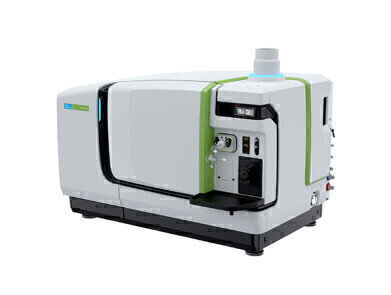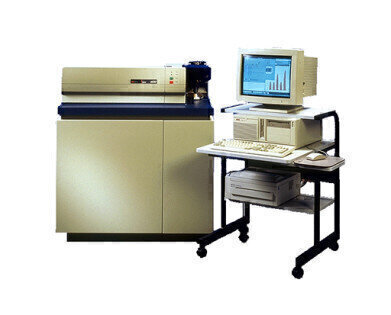-
 PerkinElmer’s NexION® 5000 launched 2020
PerkinElmer’s NexION® 5000 launched 2020 -
 Perkin Elmer Elan 6000 from the 1990s
Perkin Elmer Elan 6000 from the 1990s
Environmental Laboratory
30 years of developments in ICP-MS
Nov 30 2020
The demands placed upon ICP-MS instruments have increased dramatically in recent decades; resulting in a requirement for technology providers to significantly enhance the capabilities of their instruments. For example, in the 1990s PerkinElmer Inc. launched its patented PlasmaLok™ technology which stabilises energy distribution even when the sample matrix changes. This was featured in the ELAN 6000 and still exists as an important element of the latest instruments.
Also one of the ways PerkinElmer has enhanced sensitivity was to develop the Dynamic Reaction Cell (DRC). This is a chamber located before the quadrupole mass filter and was designed to eliminate spectral interferences. The DRC was comprised of a quadrupole that was filled with reaction gases; either one at a time or a mixture of two, which reacts with the introduced ions from the sample, eliminating some of the interference. Again, this is a technology that has been retained in today’s PerkinElmer instruments.
New software has made instrument operation simpler and faster, and extended dynamic range capabilities have provided the ability to detect both high-and low-level elements in a single sample run.
In 2010, PerkinElmer launched a new ICP-MS, the NexION® 300 which featured a Universal Cell that offered three modes of operation - Standard, Collision and Reaction. This enabled users to maximise throughput without compromising on sensitivity or performance. At that time, data acquisition typically operated at 10-50 ms, but this did not allow the assessment of tiny spikes with a duration of around 400 µs, so newer instruments were developed with much faster data acquisition rates – down to 10 µs. This enabled the quantification of nanoparticles, which was advantageous in many applications – assessing the fate of silver nanoparticles in the environment for example.
Development work has continued to focus on (1) interference removal for lower detection limits, (2) flexibility regardless of matrix, (3) analytical speed and efficiency, and (4) lower maintenance requirements. For example, in 2017 the NexION® 2000 included a new solid-state RF generator specifically designed for ICP-MS, and a Triple Cone Interface with a Quadrupole Ion Deflector, both of which improve performance and significantly reduce maintenance requirements.
Then in April of 2020, the launch of PerkinElmer’s NexION® 5000 combined all these advances with four quadrupoles, designed to remove the most complex interferences in ICP-MS analysis. Dr Abou-Shakra says this latest instrument is striking a strong chord with scientists, “The technology is being well received due to the advanced benefits offered, such as sub-ppt detection levels, a capability required in many environmental applications, such as sea water analysis.”
Digital Edition
AET 28.2 April/May 2024
May 2024
Business News - Teledyne Marine expands with the acquisition of Valeport - Signal partners with gas analysis experts in Korea Air Monitoring - Continuous Fine Particulate Emission Monitor...
View all digital editions
Events
Jul 30 2024 Jakarta, Indonesia
China Energy Summit & Exhibition
Jul 31 2024 Beijing, China
2024 Beijing International Coal & Mining Exhibition
Aug 07 2024 Beijing, China
IWA World Water Congress & Exhibition
Aug 11 2024 Toronto, Canada
Aug 25 2024 Stockholm, Sweden and online








.jpg)








